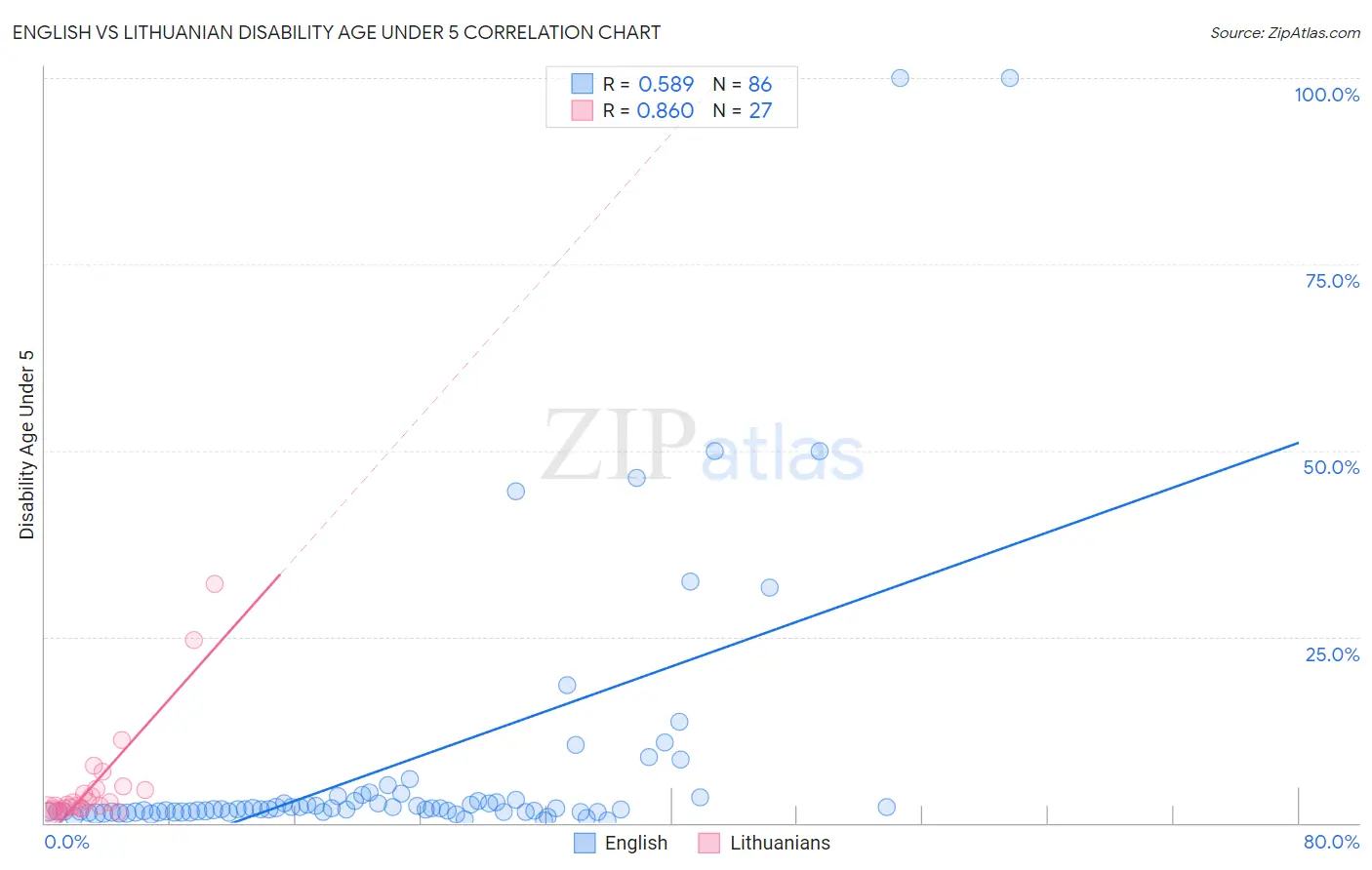English vs Lithuanian Disability Age Under 5
COMPARE
English
Lithuanian
Disability Age Under 5
Disability Age Under 5 Comparison
English
Lithuanians
1.7%
DISABILITY AGE UNDER 5
0.0/ 100
METRIC RATING
311th/ 347
METRIC RANK
1.6%
DISABILITY AGE UNDER 5
0.0/ 100
METRIC RATING
293rd/ 347
METRIC RANK
English vs Lithuanian Disability Age Under 5 Correlation Chart
The statistical analysis conducted on geographies consisting of 261,226,703 people shows a substantial positive correlation between the proportion of English and percentage of population with a disability under the age of 5 in the United States with a correlation coefficient (R) of 0.589 and weighted average of 1.7%. Similarly, the statistical analysis conducted on geographies consisting of 215,672,117 people shows a very strong positive correlation between the proportion of Lithuanians and percentage of population with a disability under the age of 5 in the United States with a correlation coefficient (R) of 0.860 and weighted average of 1.6%, a difference of 7.0%.

Disability Age Under 5 Correlation Summary
| Measurement | English | Lithuanian |
| Minimum | 0.36% | 1.2% |
| Maximum | 100.0% | 32.1% |
| Range | 99.6% | 31.0% |
| Mean | 7.8% | 5.1% |
| Median | 1.9% | 2.4% |
| Interquartile 25% (IQ1) | 1.5% | 1.9% |
| Interquartile 75% (IQ3) | 3.2% | 4.6% |
| Interquartile Range (IQR) | 1.7% | 2.7% |
| Standard Deviation (Sample) | 17.9% | 7.1% |
| Standard Deviation (Population) | 17.8% | 7.0% |
Demographics Similar to English and Lithuanians by Disability Age Under 5
In terms of disability age under 5, the demographic groups most similar to English are Puerto Rican (1.7%, a difference of 0.040%), White/Caucasian (1.7%, a difference of 0.59%), Cape Verdean (1.7%, a difference of 0.66%), Navajo (1.6%, a difference of 1.3%), and Scottish (1.6%, a difference of 1.4%). Similarly, the demographic groups most similar to Lithuanians are Italian (1.6%, a difference of 0.46%), Swedish (1.6%, a difference of 1.2%), Finnish (1.6%, a difference of 1.8%), Polish (1.6%, a difference of 1.9%), and Nonimmigrants (1.6%, a difference of 2.9%).
| Demographics | Rating | Rank | Disability Age Under 5 |
| Italians | 0.0 /100 | #292 | Tragic 1.6% |
| Lithuanians | 0.0 /100 | #293 | Tragic 1.6% |
| Swedes | 0.0 /100 | #294 | Tragic 1.6% |
| Finns | 0.0 /100 | #295 | Tragic 1.6% |
| Poles | 0.0 /100 | #296 | Tragic 1.6% |
| Immigrants | Nonimmigrants | 0.0 /100 | #297 | Tragic 1.6% |
| Cajuns | 0.0 /100 | #298 | Tragic 1.6% |
| Portuguese | 0.0 /100 | #299 | Tragic 1.6% |
| Shoshone | 0.0 /100 | #300 | Tragic 1.6% |
| German Russians | 0.0 /100 | #301 | Tragic 1.6% |
| Welsh | 0.0 /100 | #302 | Tragic 1.6% |
| Swiss | 0.0 /100 | #303 | Tragic 1.6% |
| Seminole | 0.0 /100 | #304 | Tragic 1.6% |
| Blackfeet | 0.0 /100 | #305 | Tragic 1.6% |
| Creek | 0.0 /100 | #306 | Tragic 1.6% |
| Scottish | 0.0 /100 | #307 | Tragic 1.6% |
| Navajo | 0.0 /100 | #308 | Tragic 1.6% |
| Cape Verdeans | 0.0 /100 | #309 | Tragic 1.7% |
| Whites/Caucasians | 0.0 /100 | #310 | Tragic 1.7% |
| English | 0.0 /100 | #311 | Tragic 1.7% |
| Puerto Ricans | 0.0 /100 | #312 | Tragic 1.7% |